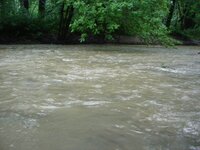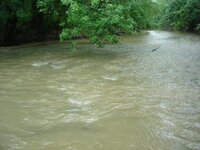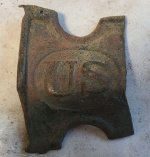Swartzie
Hero Member
- Mar 15, 2009
- 791
- 52
- Detector(s) used
- Tesoro Tejon
- Primary Interest:
- Relic Hunting
I'm totally new to panning. We did find a flake recently, however the river is an hour and a half drive so I'm looking for something closer. At least I know there is gold in Ohio. In the river where the flake was found we were sucking cracks in the bedrock. The rivers near me don't have exposed bedrock like that. But, there are several places with large rocks that create the riffle effect in the water. So looking at the attached photos where would you start to work a place like this? Upstream, downstream, or right in the rocks? Both upstream and downstream are calm and downstream kind of meanders a bit around a bend.
Thanks for any input
-Swartzie
Thanks for any input
-Swartzie
Amazon Forum Fav 👍
Attachments
Upvote
0







